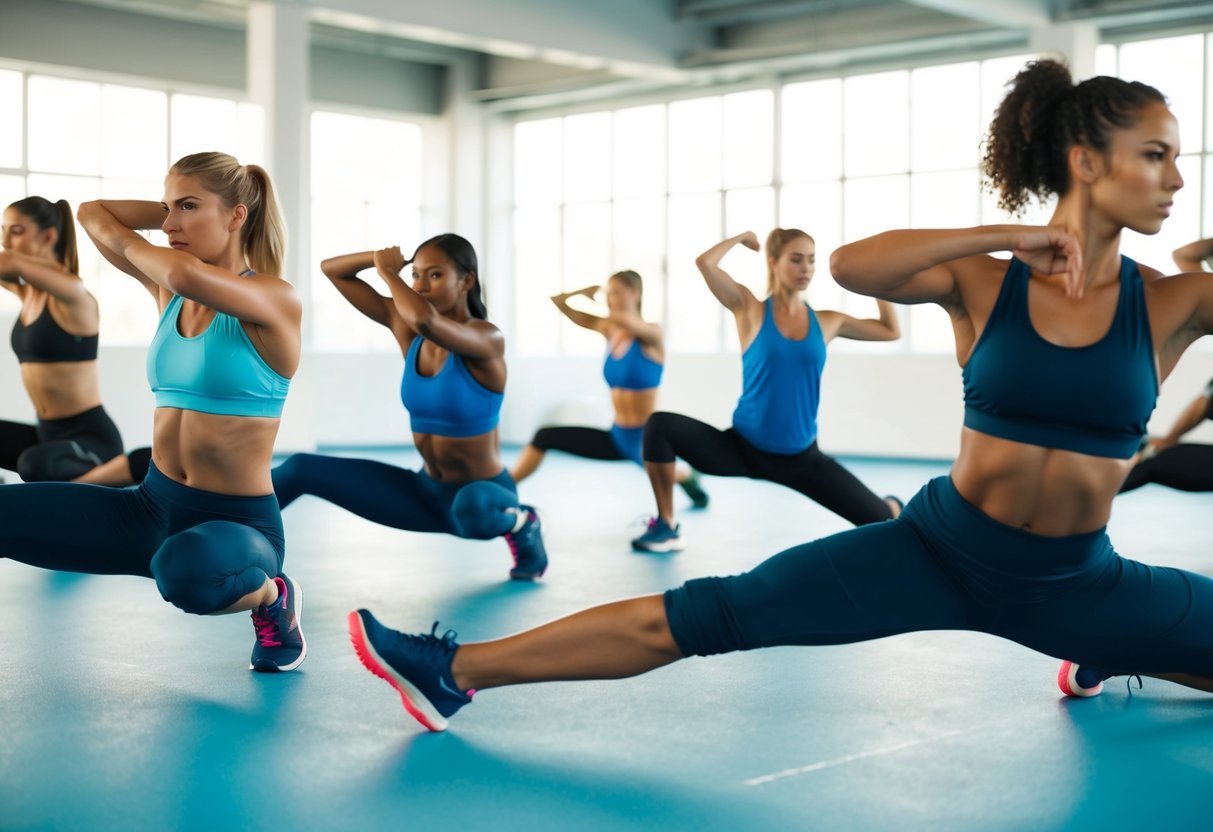
Dynamic Warm-Ups for Specific Sports
Dynamic warm-ups enhance performance and reduce injury risks across various sports by targeting sport-specific muscle groups and movements. These routines help athletes prepare their bodies effectively for the demands of their activities.
Running and Athletics
In running and athletics, a dynamic warm-up is essential for improving flexibility and increasing range of motion. Key exercises include leg swings, high knees, and butt kicks. These exercises activate the hip flexors, quadriceps, and hamstrings, crucial muscle groups used in running.
Athletes often incorporate dynamic lunges and arm circles to engage the core and upper body. This comprehensive approach leads to improved stride efficiency and reduced injury risks, as muscles are adequately warmed up before exertion. These movements also help in maintaining balance, which is vital during sprints and long-distance runs.
Team Sports Specifics
Team sports like soccer, basketball, and football require warm-ups to cater to agility, power, and coordination. Exercises such as lateral shuffles and skips prepare athletes for rapid directional changes. Jumping jacks and dynamic arm stretches are included to engage multiple muscle groups simultaneously.
Athletes also use sport-specific drills like dribbling or passing with teammates. These exercises not only warm up the muscles but also enhance team coordination and communication, providing a mental warm-up in addition to physical readiness. This dual-focus routine helps in quick adaptability during intense game situations.
Gymnastics and Dance
Flexibility and control are vital in gymnastics and dance, making dynamic warm-ups critical. Dancers and gymnasts perform exercises like ankle bounces, deep squats, and arm swings to prepare their bodies. These exercises improve joint flexibility and muscle responsiveness, crucial for executing complex routines.
Core strengthening exercises, such as plank holds or dynamic stretches, are also incorporated to support body control and balance. Emphasizing neuromuscular coordination, these warm-ups ensure that athletes can perform intricate movements safely. This attention to detail in dynamic warm-ups aids in reducing injury risks and improving overall performance in these demanding sports.
Recovery and Cool-Down Integration
Incorporating a proper cool-down phase is essential for any workout routine. Stretching exercises enhance flexibility and help reduce muscle stiffness post-exercise. They should focus on major muscle groups, promoting better range of motion without overexerting the muscles.
A cool-down should also include activities that ease the heart rate back to resting levels. Light walking or cycling can assist in this transition, paired with mobility exercises. These activities further aid in clearing metabolic waste products from the muscles.
The inclusion of static stretching at the end of a session may improve muscle length and increase joint mobility. Holding each stretch for 15 to 30 seconds ensures that muscles relax and tension is released effectively, decreasing the risk of injury.
Hydration is another crucial component in the recovery phase. Replenishing fluids lost during a workout supports muscle function and cellular processes. Hydration helps maintain joint flexibility and assists in overall recovery.
Incorporating deep breathing exercises can aid in calming the nervous system. This practice enhances the body’s relaxation response and supports oxygen flow, contributing to an effective recovery process.
Recovery routines not only minimize the potential for soreness but also prepare the body for future workouts. By integrating these practices, individuals ensure they are taking a comprehensive approach to post-exercise health.



